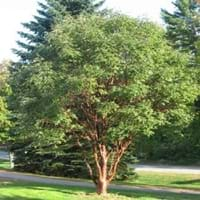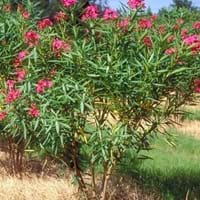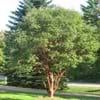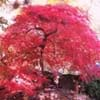Life Span
Perennial
Perennial
Type
Tree
Flowering Plants, Shrub
Origin
China
Southwest Asia
Types
Not Available
Calypso, Petite Salmon, Petite Pink
Habitat
Mixed deciduous forest
dry rocky watercourses, Riverbanks
USDA Hardiness Zone
4-8
9-11
AHS Heat Zone
8-1
Not Available
Sunset Zone
2a, 2b, 3a, 3b, 4, 5, 6, 7, 8, 9, 14, 15, 16, 17, 18, 19, 20, 21
Not Available
Habit
Upright/Erect
Bushy, Evergreen
Flower Color
Yellow
Cream, Creamy Yellow, Pink, Purple, Red, White
Flower Color Modifier
Bicolor
Bicolor
Fruit Color
Green
Not Available
Leaf Color in Spring
Dark Green
Dark Green
Leaf Color in Summer
Dark Green
Dark Green
Leaf Color in Fall
Red, Green, Bronze, Orange Red
Dark Green
Leaf Color in Winter
Not Available
Gray Green
Leaf Shape
Compound
Long linear and narrow
Plant Season
Spring, Summer, Fall, Winter
Fall, Spring
Sunlight
Full Sun
Full Sun, Partial shade
Type of Soil
Clay, Loam
Well drained
The pH of Soil
Acidic, Neutral, Alkaline
Neutral, Slightly Alkaline
Soil Drainage
Well drained
Well drained
Tolerances
Not Available
Drought
Where to Plant?
Ground
Ground, Pot
How to Plant?
Grafting, Seedlings
Layering, Seedlings, Stem Planting
Plant Maintenance
Medium
Low
Watering Requirements
Medium
Water less during winter, Water more in summer
In Summer
Lots of watering
Lots of watering
In Spring
Moderate
Moderate
In Winter
Average Water
Average Water
Soil pH
Acidic, Neutral, Alkaline
Neutral, Slightly Alkaline
Soil Type
Clay, Loam
Well drained
Soil Drainage Capacity
Well drained
Well drained
Sun Exposure
Full Sun
Full Sun, Partial shade
Pruning
Remove damaged leaves, Remove dead branches, Remove dead leaves
Prune in the late winter or spring, Remove shoots
Fertilizers
All-Purpose Liquid Fertilizer
All-Purpose Liquid Fertilizer, fertilize every 2-3 weeks while growing, Fertilize in early spring, Potassium
Pests and Diseases
Red blotch
Leaf spot, Mealybugs, Red blotch, Red spider mite, Scale, Scale insects
Plant Tolerance
Drought
Drought
Flowers
Insignificant
Yes
Flower Petal Number
Single
Single
Showy Foliage
Yes
Unknown
Foliage Texture
Medium
Medium
Foliage Sheen
Matte
Matte
Attracts
Not Available
Mealybugs, Not Available
Allergy
Not Available
Phytodermatitis, Rash, Toxic
Aesthetic Uses
Showy Purposes
Cottage Garden, Showy Purposes, Used in parkland
Beauty Benefits
Not Available
Not Available
Environmental Uses
Air purification
Air purification
Medicinal Uses
Not Available
Asthma, Cancer, Cardiotonic, Diabetes, epilepsy, Scabies
Part of Plant Used
Wood
Flowers, Leaves
Other Uses
Showy Purposes
Used as Ornamental plant
Used As Indoor Plant
No
No
Used As Outdoor Plant
Yes
Yes
Garden Design
Feature Plant, Foundation, Mixed Border
Not Available
Botanical Name
ACER griseum
Nerium
Common Name
Paperbark Maple
Oleander, Nerium Oleander
In Hindi
paperbark maple
ओलियंडर
In German
paperbark Ahorn
Oleander
In French
érable paperbark
laurier-rose
In Spanish
arce paperbark
Adelfa
In Greek
Paperbark σφενδάμου
Πικροδάφνη
In Portuguese
de bordo paperbark
oleandro
In Polish
klon paperbark
Oleander
In Latin
paperbark acernis
Cleander
Phylum
Magnoliophyta
Magnoliophyta
Class
Magnoliopsida
Magnoliopsida
Order
Sapindales
Gentianales
Family
Aceraceae
Apocynaceae
Clade
Angiosperms, Eudicots, Rosids
Angiosperms, Asterids, Eudicots
Tribe
Not Available
Wrightieae
Subfamily
Not Available
Apocynoideae, Hippocastanoideae
Number of Species
Not Available
Not Available
Difference Between Paperbark Maple and Oleander
If you are confused whether Paperbark Maple or Oleander are same, here are some features about those plants to help you choose better. Many people think that these two plants have the same characteristics, but one can see Paperbark Maple and Oleander Information and learn more about it. Fertilizers required for proper growth of Paperbark Maple are All-Purpose Liquid Fertilizer, whereas for Oleander fertilizers required are All-Purpose Liquid Fertilizer, fertilize every 2-3 weeks while growing, Fertilize in early spring and Potassium. Hence, one should know the basic difference between Paperbark Maple and Oleander if you are planning to have them in your garden to enhance its beauty.
<
Flowering PlantsImportance of Paperbark Maple and Oleander
Want to have the most appropriate plant for your garden? You might want to know the importance of Paperbark Maple and Oleander. Basically, these two plants vary in many aspects. Compare Paperbark Maple and Oleander as they differ in many characteristics such as their life, care, benefits, facts, etc. Every gardener must at least have the slightest clue about the plants he wants to plant in his garden. Compare their benefits, which differ in many ways like facts and uses. The medicinal use of Paperbark Maple is Not Available whereas of Oleander is Asthma, Cancer, Cardiotonic, Diabetes, epilepsy and Scabies. Paperbark Maple has beauty benefits as follows: Not Available while Oleander has beauty benefits as follows: Not Available.
Compare Facts of Paperbark Maple vs Oleander
How to choose the best garden plant for your garden depending upon its facts? Here garden plant comparison will help you to solve this query. Compare the facts of Paperbark Maple vs Oleander and know which one to choose. As garden plants have benefits and other uses, allergy is also a major drawback of plants for some people. Allergic reactions of Paperbark Maple are Not Available whereas of Oleander have Phytodermatitis, Rash and Toxic respectively. Having a fruit bearing plant in your garden can be a plus point of your garden. Paperbark Maple has no showy fruits and Oleander has no showy fruits. Also Paperbark Maple is not flowering and Oleander is flowering. You can compare Paperbark Maple and Oleander facts and facts of other plants too.





